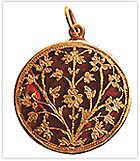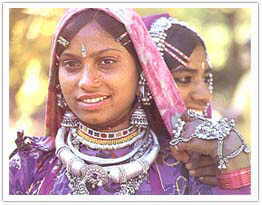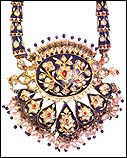|
|
||||||||||||||||||||||||||||||||||||||
| About
eIndiaTourism.com |
|||||||||||||||||||||||||||||||||||||||
|
|
||||||||||||||||||||||||||||||||||||||
| About
eIndiaTourism.com |
|||||||||||||||||||||||||||||||||||||||
 and
rings. With the advent of the Mughal Empire, Rajasthan became a major
centre for production of the finest kind of jewellery. It was a true blend
of the Mughal with the Rajasthani craftsmanship.
and
rings. With the advent of the Mughal Empire, Rajasthan became a major
centre for production of the finest kind of jewellery. It was a true blend
of the Mughal with the Rajasthani craftsmanship.  The
article is then left in the oven on a mica plate to keep it off the fire.
Colours are applied in order of their hardness those requiring more later
when set it is rubbed gently with the file and cleaned with lemon or
tamarind. The craftsmen in Jaipur are believed to have originally come
from Lahore. In Jaipur the traditional Mughal colours of red, green and
white are most commonly used in enameling.
The
article is then left in the oven on a mica plate to keep it off the fire.
Colours are applied in order of their hardness those requiring more later
when set it is rubbed gently with the file and cleaned with lemon or
tamarind. The craftsmen in Jaipur are believed to have originally come
from Lahore. In Jaipur the traditional Mughal colours of red, green and
white are most commonly used in enameling. stone
is pushed into the Kundan. More Kundan is applied around the edges to
strengthen the setting and give it a neat appearance. This was the only
form of setting for stones in gold until claw settings were introduced
under the influence under the influence of western jewellery in the
nineteenth century.
stone
is pushed into the Kundan. More Kundan is applied around the edges to
strengthen the setting and give it a neat appearance. This was the only
form of setting for stones in gold until claw settings were introduced
under the influence under the influence of western jewellery in the
nineteenth century.